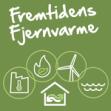Waste sorting in holiday homes
Textile waste
Every once in a while, a pair of socks get a hole or your gym trousers wear out. When clothes and other textiles become too damaged to be recycled, they can still be recycled.
After you take it to the recycling centre, it is sorted into separate piles and sent to manufacturers who can use it for things like car seat inserts, speakers or insulation.

National criteria
To ensure that waste sorting is more or less the same throughout Denmark, the Danish Environmental Protection Agency has created the national criteria below.
PERMITTED
Principles:
- Textile waste in the form of old clothes and textiles – i.e. clothes or textiles that are holed, worn out, stained or damaged and can no longer be used
- Textile waste must be dry
Examples:
- Textile waste in the form of old clothes:
- Blouses, tops, T-shirts, shirts and vests
- Trousers, shorts, jeans and leggings
- Dresses and skirts
- Underwear
- Nightwear
- Socks, stockings and tights
- Sportswear and swimwear
- Clean towelling nappies
- Hoods, gloves and scarves
- Parts and scraps of clothing
- Textile waste in the form of old textiles:
- Towels and facecloths
- Tea towels and dishcloths
- Tablecloths and serviettes
- Bedlinen
- Curtains (fabric only)
- Blankets
- Pillow and cushion covers
- Duvets, pillows, cushions, soft toys with e.g. synthetic or down stuffing
- Scraps of cloth
- Patchwork (fabric only)
- Shopping bags (fabric only)
FORBIDDEN
Principles:
- Cloths and fabrics suitable for recycling, including leather, rainwear, shoes, boots, belts and bags (at a recycling container or charity shop)
- Cloths and fabrics that are wet, mouldy or stained with food or soil (in your garbage bin as residual waste)
- Cloths and fabrics that containing undesirable substances that can give problems when recycling, e.g. chemical, oil or paint spots, along with certain waterproofing agents (at the recycling centre or in your garbage bin as residual waste)
Examples:
- Leatherwear and rainwear that is worn or damaged
(at the recycling centre or in your garbage bin as residual waste - PVC rainwear must ALWAYS go to the recycling centre)
- Shoes and boots that are worn or damaged
(at the recycling centre or in your garbage bin as residual waste - PVC shoes and boots must ALWAYS go to the recycling centre)
- Belts and bags that are worn or damaged
(at the recycling centre or in your garbage bin as residual waste)
- Electric blankets and clothes etc. with electronics
(at the recycling centre)
- Blankets with rubber linings
(at the recycling centre)
- Upholstered furniture
(at the recycling centre)
- Mattresses, spring mattresses and the like
(at the recycling centre)
- Wax tablecloths
(at the recycling centre)
- Handkerchiefs, face masks and disposable nappies
(in your garbage bin as residual waste)
Find the nearest recycling centre
Textile waste must be disposed of at a recycling centre. Search below to find the nearest one.
Agree to share your location or enter your area below.





